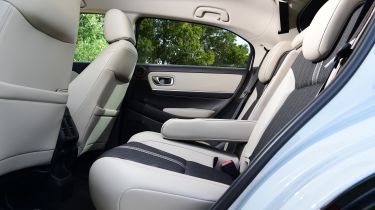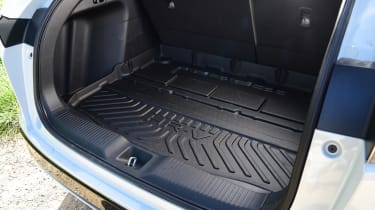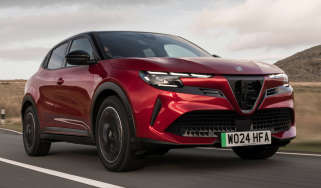Honda HR-V - Practicality & boot space
Space for passengers is decent, but boot space is poor
Honda's HR-V sits above the Jazz but beneath the CR-V in its model lineup, while rivalling the Ford Puma. This means it offers more space than a supermini for growing families but is unlikely to satisfy DIY enthusiasts or anyone who likes to fill the car with bulky sports equipment.
Honda HR-V interior space & storage
The HR-V has a lower roofline than before (by around 20mm) but this hasn't had too much of a negative impact on headroom. Thanks to the battery under the boot, rather than within the car's floor, the manufacturer has managed to retain decent height within the interior. It has also boosted rear legroom by 35mm and tall passengers are well accommodated, with adequate knee room. One area where the HR-V is lacking in comparison to rivals like the Hyundai Kona is in interior storage – the door bins and centre console don’t offer as much space as in the Hyundai.
Boot space
The negative aspect of Honda’s approach to the location and packaging of the battery is the effect on boot capacity, which is just 319 litres in the HR-V. This is 32% less than the old model and 103 litres smaller than the Nissan Juke offers, so could prove a sticking point for some buyers. Both the mid-spec and top-spec trims get powered tailgates as standard, which makes opening and closing the boot with your hands full much easier.
One redeeming feature is Honda's Magic Seats, which allows you to fold the rear seats into the floor to liberate 1,289 litres of space or flip the seat bases upwards (like the chair in a sports stadium) to provide a tall space in the second row.
Towing
Honda hasn't released a towing figure for the HR-V yet but its hybrid powertrain is likely to limit its abilities here, so we wouldn't expect it to be able to tow a large caravan or heavy trailer.
Which Is Best?
Cheapest
- Name1.5 eHEV Elegance 5dr CVT
- Gearbox typeAuto
- RRP£32,020
Most Economical
- Name1.5 eHEV Advance 5dr CVT
- Gearbox typeAuto
- RRP£34,550
Fastest
- Name1.5 eHEV Elegance 5dr CVT
- Gearbox typeAuto
- RRP£32,020












